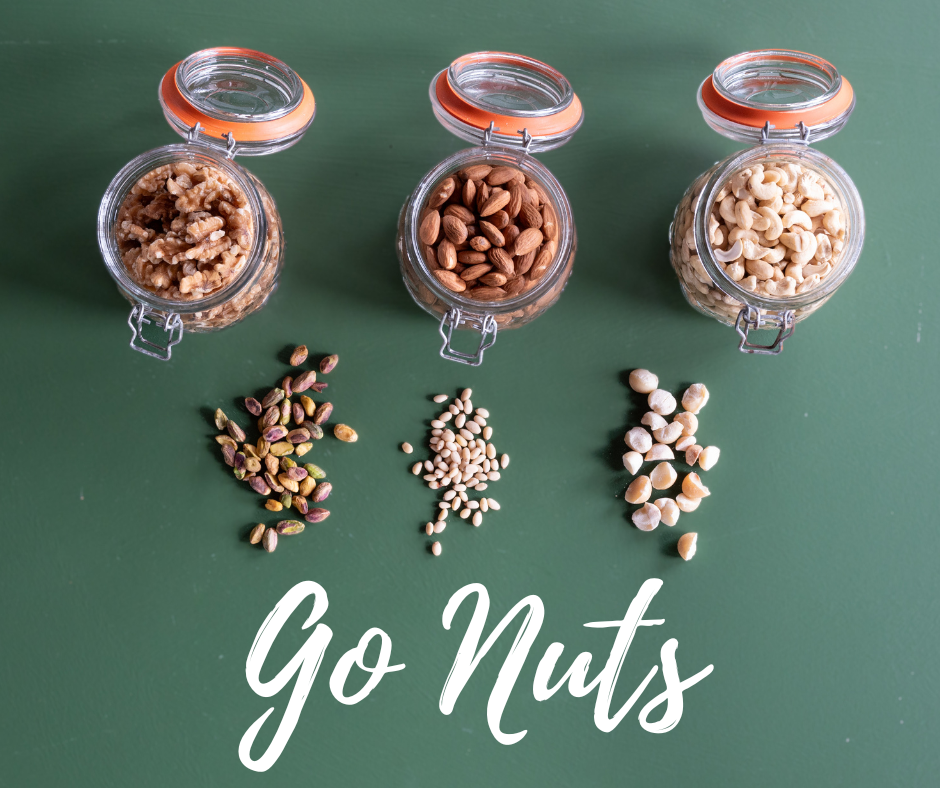
Words Vicki Ravlich-Horan
Want to go nuts? Try to work out if what you are eating is a nut, a drupe or a seed, and just for fun, let’s throw in some legumes.
OK, so you probably know that peanuts are not nuts, but a legume that grows underground. If you ever get a chance, I highly recommend trying to grow some! It’s great for the kids to dig them up and find the peanuts.
Other than peanuts we tend to call every other nut ‘tree nuts’, but just as a tomato is technically a fruit not a vegetable, things are not this simple. Most of what we think of as nuts are drupes.
What is a nut? Botanically speaking, a nut is a hard-shelled pod that contains both the fruit and seed of the plant, where the fruit does not open to release the seed. True nuts include chestnuts, hazelnuts and acorns.
What is a drupe? A drupe is a fruit with an outer fleshy part surrounding a shell (or in the case of common drupes like apricots, peaches and plums, a pit) with a seed inside. This means almonds, macadamias and pecans are drupes, not nuts.
And although not all are technically nuts, they are all seeds! Confused? Let’s just get on and enjoy them.
Liz Cerderia and Anna Greentree from Vetro Tauranga and Hamilton, respectively say that most people don’t make the connection with nuts being a crop. “What needs to be understood is that nuts are a crop and can have good and bad seasons and can be affected by climate issues.” says Liz “So, we (in New Zealand) are at times limited to what is on offer and there are times when the whole country can be out of stock because we are between crops and the new crop hasn’t been harvested or hasn’t arrived yet and since pretty much all are imported, prices can fluctuate considerably” adds Anna.
For me, the key to enjoying nuts is in their freshness. For years I hated walnuts, simply because the only ones I had ever tasted were the rancid nut on top of an Afghan. To this day I can’t put a walnut on an Afghan, even if I know it’s a fresh one.
Nuts have a high oil content, and this means they can go rancid. In my kitchen nuts are ranked in a complicated hierarchy that takes into account how expensive they are and how often I use them, and this determines where they are stored. For instance, almonds and cashews are used a lot and thus I store them in the pantry. I love pistachios and pine nuts and because of their high price tag I don’t use every week, but I do go through them, so these are stored in the fridge. Macadamias are very expensive, and I hardly ever use them, so these are kept in the freezer.
I always buy my nuts from Vetro because of the size, quality and freshness. Liz says Vetro nuts are better for a number of reasons, and one of these is freshness. “Because we are big enough to turnover large quantities quickly, we can ensure our nuts are fresh. We pack inhouse and we are able to personally check all products as they go through our pack-rooms. Our packers are told to ‘try before packing’. On top of that, all nuts that come into New Zealand come in bulk and it is what the retailer does that will make the difference. At Vetro they are always kept sealed and in chillers or under the correct conditions. They are never sitting open and exposed, which can cause staleness, rancidity and contamination.”
Did you know?
Almonds
The earliest varieties of almonds were found in China, carried by traders down the ancient silk road to Greece, Turkey and the Middle East. Both almonds and dates are mentioned in the Old Testament of the Bible.
California provides roughly 80% of the world’s almond supply.
Brazil Nuts
Brazil nuts are Anna Greentree from Vetro Hamilton’s favourite nut: “They are the best natural selenium food source in the world. Selenium is said to be key to many body functions, including inflammation and mood, as well as helping aid a healthy heart and thyroid and New Zealand soil is very poor in selenium, which is why we need to very consciously consume it elsewhere.”
Only about 2% of Brazil nuts actually come from Brazil. The majority come from Bolivia.
Most Brazil nuts traded come from wild collection rather than plantations. This has been advanced as a model for generating income from a tropical forest without destroying it.
Cashew
The cashew nut grows in a shell hanging under a fleshy, pear-shaped ‘apple’ fruit that is yellow, orange or red in colour. The cashew apple is sweet and nutritious when ripe. The cashew shell itself is poisonous. Oil from cashew nut shells is used in insecticides, brake linings, and rubber and plastic manufacture.
Walnuts
Walnuts are recognised as the oldest tree food known to man, dating back to about 7000 B.C. The slightly bitter flavour of walnuts is caused by a non-harmful tannic acid in the skin of the nut. It can be easily removed by blanching the walnuts in boiling water before use. (Add walnuts to boiling water. Take pot from heat and let stand for 2 minutes. Drain walnuts; spread on baking sheet. Toast at 180C for 10 minutes.)
Hazelnut
Liz’s favourite nut flavour, and she is not alone. In 1806, Gianduia paste was created in Turin by local confectioners who needed to reduce the cocoa content in chocolates due to the steep rise in cocoa prices. They mixed what little cocoa powder they had with the paste obtained by grinding local hazelnuts and the flavour combination was born.



